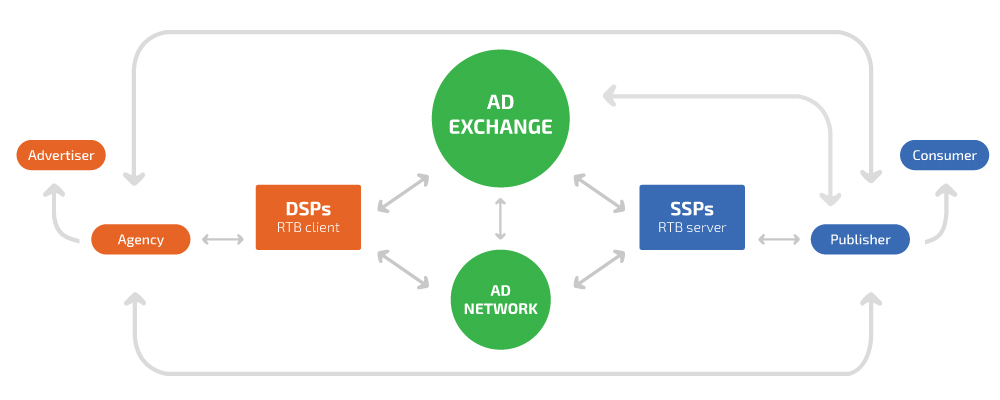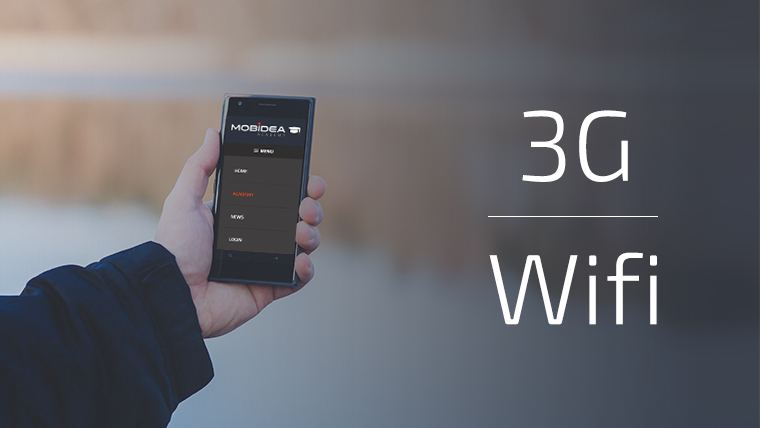What is a DSP (Demand-Side Platform)? – A Complex New World
Last updated on May 21, 2018 by Sílvia Barros 7 min readTable of Contents
ToggleEditor’s Note: This is a section of our Media Buying Guide – Semi Advanced. Check it out!
Have you ever tried to explore the world of Media Buying and found yourself caught in a complex web of interconnected platforms and new concepts?
Have you felt completely lost and confused about terms like ad exchange, Supply Side Platforms, Demand Side Platforms, and wondered how they’re connected to each other?
And what about the ad networks?
How do they fit in this world?
Lastly, why do we even need all this programmatic jargon harassing us on a daily basis?
Fear not, brave Media Buying soldiers!
I’ll now shed some light on this complex, enigmatic subject!
A bit of history
Let’s travel back in time, exploring the vibrant world of online advertising.
We find ourselves in 1993, the year that marked the first time an ad was sold on a website.
Then, at the very beginning, a Media Buyer had to contact the owner of a website (publisher) directly in order to negotiate a price for a spot and be able to advertise an offer there.
The following years were all about rapid expansion – the number of websites and internet users increased tremendously.
Therefore, managing the process of buying and selling online space and the sale of non-sold ad spaces became a tough task.
It became so difficult that a business was created from that newly-made mess:
The wonderful world of ad-networks, born in 1998.
What are Ad Networks?
Ad networks are the middle man that sells you space on websites.
In fact, they help brands advertise their offers on many websites in an efficient way by using one platform while also allowing publishers to monetize their inventory.
Learn More: What is an Ad Network and How to Effectively Use It
Want to know more about ad networks and impress your friends?
There are two Mobidea Academy posts you’ve gotta check.
One is a post where you’ll be able to clearly understand what ad networks are all about.
The other one is a deep analysis of the most important adult ad networks around.
For instance, one of the best ad networks you can check is ExoClick.
By the end of the 90s, the number of ad networks had exploded.
Because of the fierce competition – and in order to differentiate themselves in the marketplace while also keeping profitable margins – ad networks started specializing in ad quality and audiences.
This necessarily led to a fragmentation of the web; it was so fragmented that it became harder to effectively advertise online.
In 2005, ad exchanges started popping up due to the need to make online advertising more efficient while providing a more transparent form of connecting publishers to advertisers.
Along with it – in 2009 – Demand Side Platforms appeared to give advertisers more control over the buying process.
On the other hand, the Supply Side platforms seemed to give publishers more control over their inventory.
Let’s take a closer look at these platforms:
Ad Exchanges, DSP, SSP and RTB
Now let us go big. At a larger extent, ad exchanges are digital market places that allow publishers and advertisers to sell and buy advertising space.
Unlike ad networks – which sell inventory in bulk – ad exchanges allow you to buy and sell per impression.
They also give you the possibility to create auctions for every single impression.
The most effective way to connect publishers and advertisers that ad exchanges have created is to connect SSPs (Supply Side Platforms) and DSPs (Demand Side Platforms).
Both platforms were developed to efficiently trade on the ad exchange, helping publishers and buyers make the right decisions.
Supply side platforms were created to help publishers manage and sell their advertising space inventory.
SSPs provide valuable info to publishers, such as statistics of the amount of time a visitor spends visiting a specific website, the pieces of content a visitor views per session, or the percentage of return visitors to the website.
All this info provides an effective way to measure traffic monetization.
The SSP is an interface between the publisher and the ad exchange.
It allows publishers to make their inventory available while also optimizing the way they sell it.
On the other hand, demand side platforms are used by those who want to buy digital advertising inventory.
Similar to SSPs, Demand Side Platforms let users manage multiple ad exchanges through one single interface.
Due to the fact that Demand Side Platforms are connected to several ad exchanges, they allow users to buy traffic from a great range of websites.
This means their reach is impressive and out of this world; it’s something unprecedented in the history of online display advertising.
Moreover, Demand Side Platforms offer very detailed targeting such as geography, browser, device and OS targeting, day parting, demographic data (such as age or gender), etc. This makes them extremely efficient at targeting audiences.
Furthermore, most DSPs provide amazing statistics.
There, you can check the performance of your campaigns with remarkable detail and in real-time, which allows for a super-efficient optimization.
Here’s a simple diagram to help you understand the connection among the different platforms:
It’s interesting to realize that ad networks are not separated from ad exchanges.
Indeed, there are cases where ad networks buy to and sell traffic from ad exchanges, boosting their offers.
Media Buying Using Demand Side Platforms
Demand Side Platforms make use of programmatic buying, which means they use technology to automate and optimize the advertisement buying process in real-time.
As a result, massive amounts of data are processed in a very short period of time.
Thanks to this, the ads can be displayed only to the correct person that’s browsing a website, and the bidding process is automated.
DSPs explore Real-time bidding (RTB). It’s a method where bids are made for each and every impression in real-time auctions that happen while a webpage is loading – unlike static bidding, where the bid is done in groups of up to several thousand impressions.
The image below pictures this difference. On the left, you’ll see impressions bought in bulk; on the right, you can check the RTB process.
Let’s give you some details so you really get this.
What happens here is simple: while an ad spot is loading on a user’s browser, the info about the webpage where it’s being displayed in and the info about the user are passed on to an ad exchange.
Then, the ad is auctioned to the advertiser who has the highest bid and the corresponding ad is displayed on the webpage.
Naturally, this process is very fast and takes only a few milliseconds to complete.
RTB helps advertisers cut down the number of impressions wasted in users who may initially not be interested in the product.
On the publisher side, RTB helps keep their bids on track while creating a detailed picture of the demand.
In addition, DSPs incorporate an algorithm that adjusts several variables in real-time based on their performance, in order to make the campaigns profitable.
It filters the ad impressions, basing the decision on the consumers’ behavioural data.
This makes the buyer able to set budgets, goals, maximum bid prices and network reach, in order to reduce the investment risk.
All this automation saves buyers from some of the crazy heavy, complex data analysis that’s needed to get that sweet ROI.
In the end, programmatic buying is hyper-efficient, more transparent and more cost-effective.
How Can I Start Working With a Demand Side Platform (DSP)?
Among many others, some examples of DSPs are Bucksense, SiteScout and MediaMath.
Each DSP has different characteristics, such as different performing algorithms, different targeting or different performances for different types of traffic (mobile, desktop…).
All DSPs work with dynamic bids and use parameters such as maximum CPM or CPA – which you’re gonna pick – to optimize the campaigns.
Here’s a general example of the process:
After the user sets the maximum limits for CPM and/or CPA, the algorithm sets an initial bid for a campaign.
It then evaluates the different quality parameters and performs some optimizations.
Eventually – if the campaign performance allows for that – it adjusts the bid so the traffic quality improves.
In addition – since DSPs provide very detailed statistics – you can use them to speed up the process and help the algorithm by performing some optimizations yourself.
Here are 6 tips on what to look at when choosing a DSP to start working:
- You must set your target audience and the goals you want to achieve
- Your budget also plays an important role when picking a DSP. Some demand a high price commitment such as 90,000€ per month while others will ask for a minimum budget of around 500€ or no minimum budget at all, like Bucksense
- Different DSPs work with different types of traffic sources. You must choose one that’ll give you the traffic that’s right for your campaigns
- The majority of DSPs have access to most of the ad exchanges. Nonetheless, some have access to premium ad exchanges that have a better quality inventory. Don’t forget: always make sure the DSP has the reach you’re looking for
- Since each Demand Side Platform has its own algorithm to place bids and perform optimizations, it’s important to understand with which parameters it works and how it works. Even though you won’t be able to fully see how the algorithm works, understanding it is important for the technique you’ll use to optimize your campaigns
- The client support that’s provided is also fundamental. You should look for a DSP that gives you that support. Trust me: sooner or later, everybody needs some feedback from the other side!
Now you know the basics of DSPs! You’re ready to invest some time studying them thoroughly and carefully, becoming able to find which one is the right fit for you!
I hope this article gave you the boost you needed to start exploring a whole new ball game.
I’m sure that the Demand Side Platform you eventually pick is gonna be that cool, saucy money making machine you know you want!

Sílvia is a Physics major, which is why she loves analyzing and is addicted to campaign optimization! She was born to study, work hard, and make it rain on Mobidea, taking awesome advantage of her many technical skills! When she isn't ruling the Media Buying world, Sílvia is probably walking on the beach!
Understand how 3G traffic and Wi-Fi traffic convert differently and get ready to boost affiliate marketing profits like a master!
An affiliate marketing guide created to explain basic concepts and key terms to newbies? Read it and become an expert affiliate (yes, definitely) right now!
These 5 advantages of using a Demand Side Platform will allow you to truly understand the potential of these awesome advertising interfaces!






